Related Research Articles

The Victorian Artists Society, which can trace its establishment to 1856 in Melbourne, promotes artistic education, art classes and gallery hire exhibition in Australia. It was formed in March 1888 when the Victorian Academy of Arts and the Australian Artists' Association amalgamated.

Brett Whiteley AO was an Australian artist. He is represented in the collections of all the large Australian galleries, and was twice winner of the Archibald, Wynne and Sulman prizes. He held many exhibitions, and lived and painted in Australia as well as Italy, England, Fiji and the United States.

Frankston is a suburb in Melbourne, Victoria, Australia, 41 km (25 mi) south-east of Melbourne's Central Business District, located within the City of Frankston local government area. Frankston recorded a population of 37,331 at the 2021 census.

Sir Arthur Ernest Streeton was an Australian landscape painter and a leading member of the Heidelberg School, also known as Australian Impressionism.

Sir George Russell Drysdale, also known as Tass Drysdale, was an Australian artist. He won the prestigious Wynne Prize for Sofala in 1947, and represented Australia at the Venice Biennale in 1954. He was influenced by abstract and surrealist art, and "created a new vision of the Australian scene as revolutionary and influential as that of Tom Roberts".
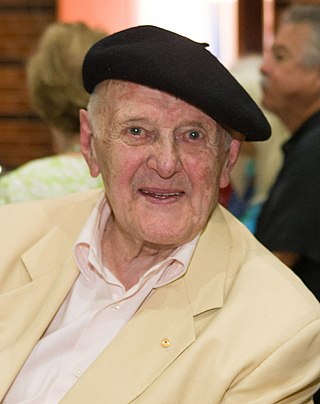
John Henry Olsen AO OBE is an Australian artist and winner of the 2005 Archibald Prize. Olsen's primary subject of work is landscape.
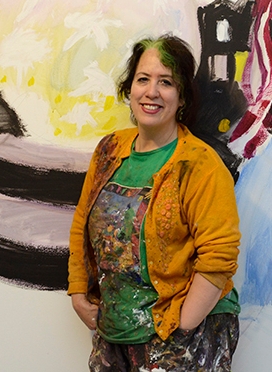
Wendy Sharpe is an Australian artist who lives and works in Sydney and Paris. She is the only child of British parents and has a Russian Jewish heritage. Her father is the writer and historian Alan Sharpe. She counts among her influences paintings by Chaïm Soutine and Max Beckmann.[1] She is the winner of numerous major awards including the Archibald Prize, the Sulman Prize, the Portia Geach Memorial Prize and The Adelaide Perry Drawing Prize. She was commissioned by the Australian War Memorial as an official Australian War Artist in East Timor in 1999–2000. Her partner is artist Bernard Ollis.
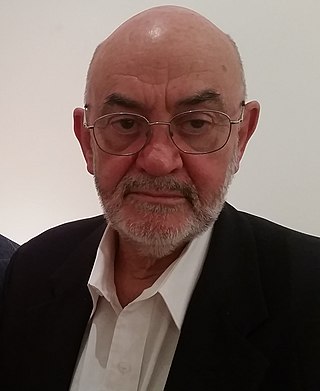
Rick Amor is an Australian artist and figurative painter. He was an Official War Artist for Australia.

Sir John Campbell Longstaff was an Australian painter, war artist and a five-time winner of the Archibald Prize for portraiture. His cousin Will Longstaff was also a painter and war artist.

Frederick Ronald Williams OBE was an Australian painter and printmaker. He was one of Australia’s most important artists, and one of the twentieth century's major landscapists. He had more than seventy solo exhibitions during his career in Australian galleries, as well as the exhibition Fred Williams - Landscapes of a Continent at the Museum of Modern Art in New York in 1977.
Evert Ploeg is one of Australia's most highly regarded portrait painters, who has won a range of painting prizes, such as the 1999 and 2007 Archibald Prize and was awarded the highly coveted ‘Signature Status’ of The Portrait Society of America.
Janet Dawson MBE is an Australian artist who was a pioneer of abstract painting in Australia in the 1960s, having been introduced to abstraction during studies in England while she lived in Europe 1957–1960 She was also an accomplished lithographic printer of her own works as well as those of other renowned Australian artists, a theatre-set and furniture designer. She studied in England and Italy on scholarships before returning to Australia in 1960. She won the Art Gallery of New South Wales Archibald Prize in 1973 with the portrait of her husband, Michael Boddy Reading. She has exhibited across Australia and overseas, and her work is held in major Australian and English collections. In 1977 she was awarded an MBE for services to art.
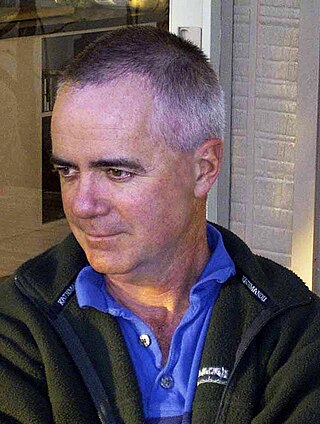
Robert Hollingworth is an Australian artist and writer.
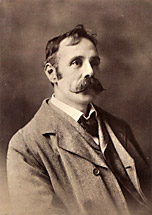
Walter Herbert Withers was an English-born Australian landscape artist and a member of the Heidelberg School of Australian impressionists.

George James Coates was an Australian painter, primarily dealing with portraits. He worked as an official war artist to the Australian government in 1919, and from then on specialised in war subjects until his death in 1930.
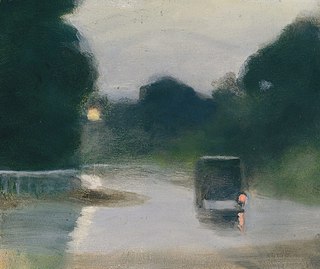
Australian tonalism was an art movement that emerged in Melbourne during the 1910s. Known at the time as tonal realism or Meldrumism, the movement was founded by artist and art teacher Max Meldrum, who developed a unique theory of painting, the "Scientific Order of Impressions". He argued that painting was a pure science of optical analysis, and believed that a painter should aim to create an exact illusion of spatial depth by carefully observing in nature tone and tonal relationships and spontaneously recording them in the order that they had been received by the eye.
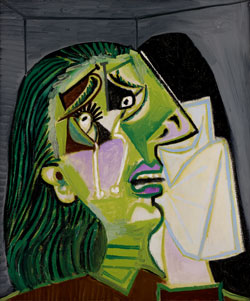
The theft of The Weeping Woman from the National Gallery of Victoria took place on 2 August 1986 in Melbourne, Victoria, Australia. The stolen work was one of a series of paintings by Pablo Picasso all known as The Weeping Woman and had been purchased by the gallery for A$1.6 million in 1985—at the time the highest price paid by an Australian art gallery for an artwork. A group calling itself "Australian Cultural Terrorists" claimed responsibility, making a number of demands in letters to the then-Victorian Minister for the Arts, Race Mathews. The demands included increases to funding for the arts; threats were made that the painting would be destroyed. After an anonymous tip-off to police, the painting was found undamaged in a locker at Spencer Street railway station on 19 August 1986. The theft still remains unsolved.
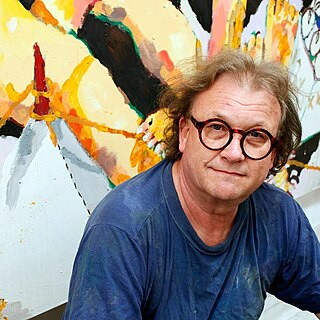
Bernard Ollis is an Australian artist and painter who lives and works in Sydney and Paris. Ollis is the former director of the National Art School, Sydney.
Patrick Francis is an Australian artist, athlete and author. He is best known for his colourful depictions of contemporary Melbourne life and as the co-founder of Absolutely Awetistic Arts. In 2014 he won a Victorian Young Achiever Award and in 2012 was the recipient of the prestigious Art & Australia/Credit Suisse Private Banking Contemporary Art Award. In 2013 his work was included in the blockbuster exhibition Melbourne Now at the National Gallery of Victoria and he has exhibited internationally in India, Singapore and Bangkok. His work is held in the collections of the Art Gallery of NSW and Artbank. He has been a studio artist at Arts Project Australia since 2009.

Polly Hurry, was an Australian painter. She was a founding member of the Australian Tonalist movement and part of the Twenty Melbourne Painters Society.
References
Texts
- Germaine, Max. Artists and Galleries of Australia, Volumes 1 & 2, Third Edition. Craftsman Press, Sydney, 1990. Page 410